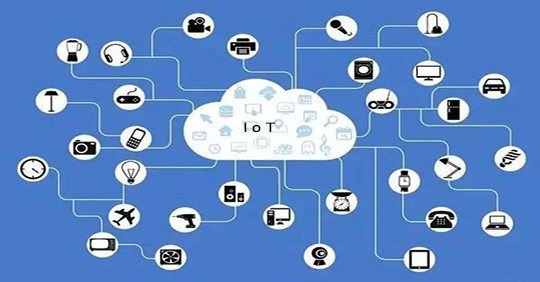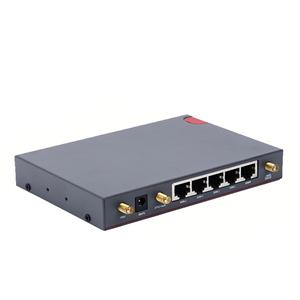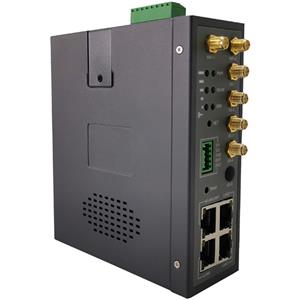Explore the possibilities of next-generation networks beyond NB-IoT and WiFi
Explore the possibilities of next-generation networks beyond NB-IoT and WiFi

No one will deny that most of the convenience of the city comes from the blessing of the wireless network, and the lives of modern people are given by WiFi.
As for smart cities, automated factories, connected cars, AIoT, etc., these cool conceptual terms can't live in the industry without their dependence on communication networks.
After all, the hope of a smart life depends on the next generation communication network. In the past year, we haven't heard this term a lot, but what exactly does "next-generation communications" look like and how it will disrupt and reshape the network? Presumably most people are ambiguous.
At the same time, more doubts are brewing: what weaknesses do we take for WiFi? Will 5G be a breakthrough to open up the intelligent connection of all things? What kind of network does AIoT need? Today we might as well try to open the brain ...
Former Kings: Why did WiFi and NB-IoT fail?
Before that, it is necessary to answer a question: What is the core logic of IoT communication? This problem is not difficult, that is, to achieve the connection between various edge devices (especially various sensors) and the Internet.
Many protocols and solutions are used, such as Bluetooth, Zigbee, Z-Wave, WiFi, etc. for short-distance transmission, and NB-IoT, LoRa, Sigfax, etc. for long-distance transmission. We are familiar with wired networks such as Ethernet and fiber optic networks It's not uncommon.
One of the most common technologies is NB-IoT. With the gradual withdrawal of 2G network signals, the advantages of NB-IoT solutions in terms of power consumption and price have gradually become apparent. Since the standard freeze in 2016, NB-IoT has been successfully used on a large scale in just 3 years. As of mid-2019, there have been 14 NB-IoT chip manufacturers in China, and more than 1,000 application terminal companies have become the leading technology for IoT applications.
Of course, Wi-Fi is not too much. As the only protocol that can provide high-speed data transmission, it has always been a main network for homes and offices with high performance and low latency. In the new era, Wi-Fi also New missions have been given, such as in radar systems and two-factor authentication systems. According to Gartner's forecast, shipments of WiFi chips will exceed 1.5 billion in 2020.
So, why can't these two shoulder the task of "next generation network"? There are three main restrictions:
1. Cloud-network integration. More and more IoT devices need to access various cloud platforms, but end-to-end solutions from the edge to the cloud require a lot of field testing and support efforts in cooperation with operators, and most of the NB-IoT vendors' R & D With limited capacity, it is easy to encounter difficulties such as concurrency delays and low data upload success rates.
2. Synergy. Another feature of the Smart Internet of Things is vertical industrialization, which also means that service providers need to meet the differentiated needs of application vendors in different industries, so a single communication technology cannot meet the application requirements of IoT. However, in the industrial areas where intelligence is most needed, the capabilities of NB-IoT and WiFi are relatively limited. The range of WiFi is only about 200 meters, and the working frequency is 2.4-5 Hz, which means that it cannot penetrate some special structures. What industrial production needs is the combination of short distance, long distance and wired communication technology to build a smooth and unobstructed For IoT networks, the application of a single technology is obviously not enough.
3. Cost-effective. Another reason to limit the large-scale use of WiFi is money. In the industrial field, high-density, low-cost equipment that needs to be connected is often used, such as water level sensors at pumping stations, rain sensors in cities, or meteorological sensors. Their scale and never go offline This means that every bit of power consumption is a cost, and WiFi access will consume a lot of power, making it an unbearable light weight for enterprises.
All in all, the era of relying on a single communication technology to control a single microcontroller to handle communication protocols is becoming a thing of the past.
When mashups have become a trend: the "Lego" prototype of the next generation network
When it comes to the Internet of Things, it will inevitably encounter a "menstrual post"-what about 5G? What about 5G? Don't you TM 5G?
Indeed, the market ambition given to 5G communication networks is very great, especially to support communication between a large number of machines (ie M2M). Isn't it the son of the natural choice to save the network?
Unfortunately, such expectations may take time to realize one by one:
First, 5G will only be deployed in 2019, and it will take three to five years to mature even at the "China speed". For large places such as factories and airports that require cost-effective networks, it can be used as a complementary solution to WiFi to provide reliable instant communication, or it can be used in some fields with high real-time requirements, such as car networking, drones, etc. Wait, but the full roll-out is still far away.
In addition, 5G large-scale applications need unified technical standards to support it. Currently, 3GPP is stepping up the development of relevant specifications, such as Release 16 for low-latency industrial applications. It is expected that the relevant specifications will be frozen next year, when chip manufacturers will be convenient to carry out. Product development, one or two years later.
(5G development roadmap)
So, where should IIoT go? The answer may be hidden in Lego blocks.
Building a complete building block requires many different forms of components. Similarly, the complex IoT network also carries more diverse requirements. For example, the need to view and control IoT devices through a mobile phone. Bluetooth is essential. Factory equipment and Ethernet must be transmitted. The network cannot be retired, and some low-latency requirements require high-speed 5G. In addition, WiFi, fiber optics, xDSL and other technologies also have their own advantages. A complete next-generation "IoT network" must stack multiple wireless technologies in a single chip to meet market demand.
This also poses new challenges to the R & D and creative capabilities of terminal manufacturers.
Because different chip vendors have different software and development tools, terminal equipment manufacturers must integrate different technologies in their products according to these different development environments, which will undoubtedly greatly affect the original interview speed of the product.
And IoT terminals based on the Internet of Things are often customized, with a small amount of diversity, and upstream vendors who can integrate the development software ecosystem and help terminal manufacturers quickly pass the painful period of network upgrades will also have the advantage to recruit more developers and welcome High-speed development life cycle and growth opportunities.
A successful Lego building block must also have a tightly connected, complete and strong force structure to ensure its stable shape. Reflected in the IoT network, the interweaving of multiple systems and communication technologies, combined with the denseness of data transmission, will also create countless possible "attack points", which in turn will generate doubts and concerns about network security. Therefore, the deployment of the IoT network must also be considered from the perspective of the entire ecosystem. In addition to chip self-protection, the establishment of a secure channel, and the establishment of an authentication system, etc., it may even need to consider political risks to achieve relative IoT security. .
Total Subversion: An Industrial Rich Mineral for Next Generation Industrial Communications
Presumably from the previous trends, keen friends have seen a lot of business opportunities in the industry. Such as integrated IoT chips, unified IoT development platform, etc., but these high-tech threshold business opportunities are often opportunities for players in the upstream of the industry chain.
For many small, medium and micro services, in what areas can this wave of communication disruption take off?
At the moment, there are three changes worth noting:
1. Industrial applications of real-time networks. The application of the new generation network means that the information flow from store-and-forward is shifted to real-time information flow. Therefore, the Industrial Internet of Things is developing to a predictable, real-time, high-bandwidth network faster, which means that the transmission of many high-definition data becomes possible. This further opens up the industrial imagination of real-world interactive technologies such as images and audio, enabling remotely assisted, real-time response visualization operations to become a reality.
2. Substantial changes in connected cars. Regardless of the current vehicles equipped with autonomous driving modules or the unmanned vehicle technology that is moving towards fully automatic driving, it is a fact that car control systems have become more and more complex. Whether it is the vehicle's communication system or the in-vehicle entertainment network, it is necessary. Low-latency, real-time transmission, and high security ensure unified management. The composite system ensures stable data exchange, which will lay a new safety standard for the Internet of Vehicles.
3. Management services of the Industrial Internet of Things. The change in communication methods will also change the management of the Internet of Things from device-oriented to policy-oriented. This requires that the IoT network be intelligent enough to face different B-end users, provide advanced embedded management tools, and be able to Cloud service providers that can continuously perform fault diagnosis, performance monitoring, and automated fault processing, etc., that are the first to achieve "zero management", will hopefully capture the wealth of enterprise-level services to the maximum.
In general, the "next generation communication network" has never been exclusive to a certain technology. It will be synonymous with simplicity, efficiency, and security. It will subvert the existence that we have been accustomed to. What kind of branches will it grow in the spring weather in the new year? Let's look forward to it together.




